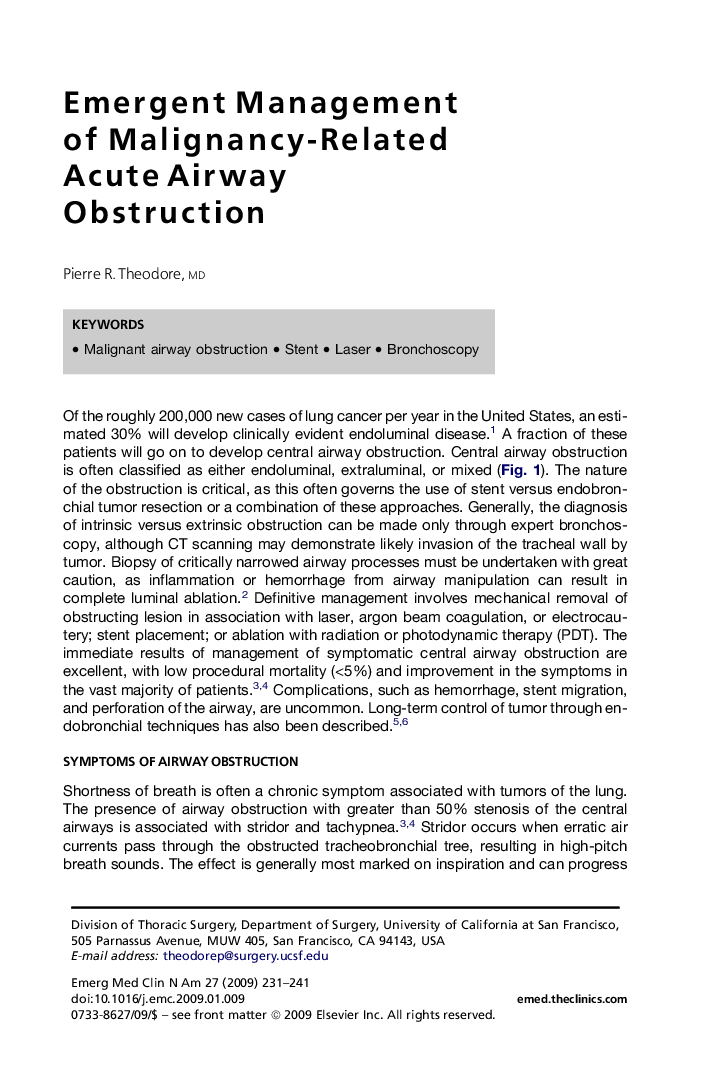| Article ID | Journal | Published Year | Pages | File Type |
|---|---|---|---|---|
| 3237356 | Emergency Medicine Clinics of North America | 2009 | 11 Pages |
Acute obstruction of the airway in the emergent situation results from a wide variety of malignant and benign disease processes. Acute management involves establishing a secure and patent route for adequate gas exchange. This requires rapid determination of the location of the obstruction and nature of the obstruction followed by a thoughtful management approach based on findings. Difficult anatomy, hemorrhage, dense secretions, inflammation, and bulky tumor mass can significantly complicate the task of clearing the airway. Obstruction of the central airways by malignant tumor is associated with poor prognosis, but quality of life is considerably improved by restoration of adequate central airways. For both the patient and the clinician, the presentation can be frightening, and advanced interventional pulmonary/endobronchial techniques are required to achieve prompt relief of symptoms. The alleviation of central airway obstruction by tumor is most often palliative, with improvement of quality of life the primary goal rather than cure. This review will cover covers an approach to the patient with airway obstruction that results from malignancy involving the trachea or proximal bronchial tree and affecting gas exchange.
